Iowa Falls Army vet's vast WWII collection to be displayed soon
Plans under way for many items to be displayed in downtown building
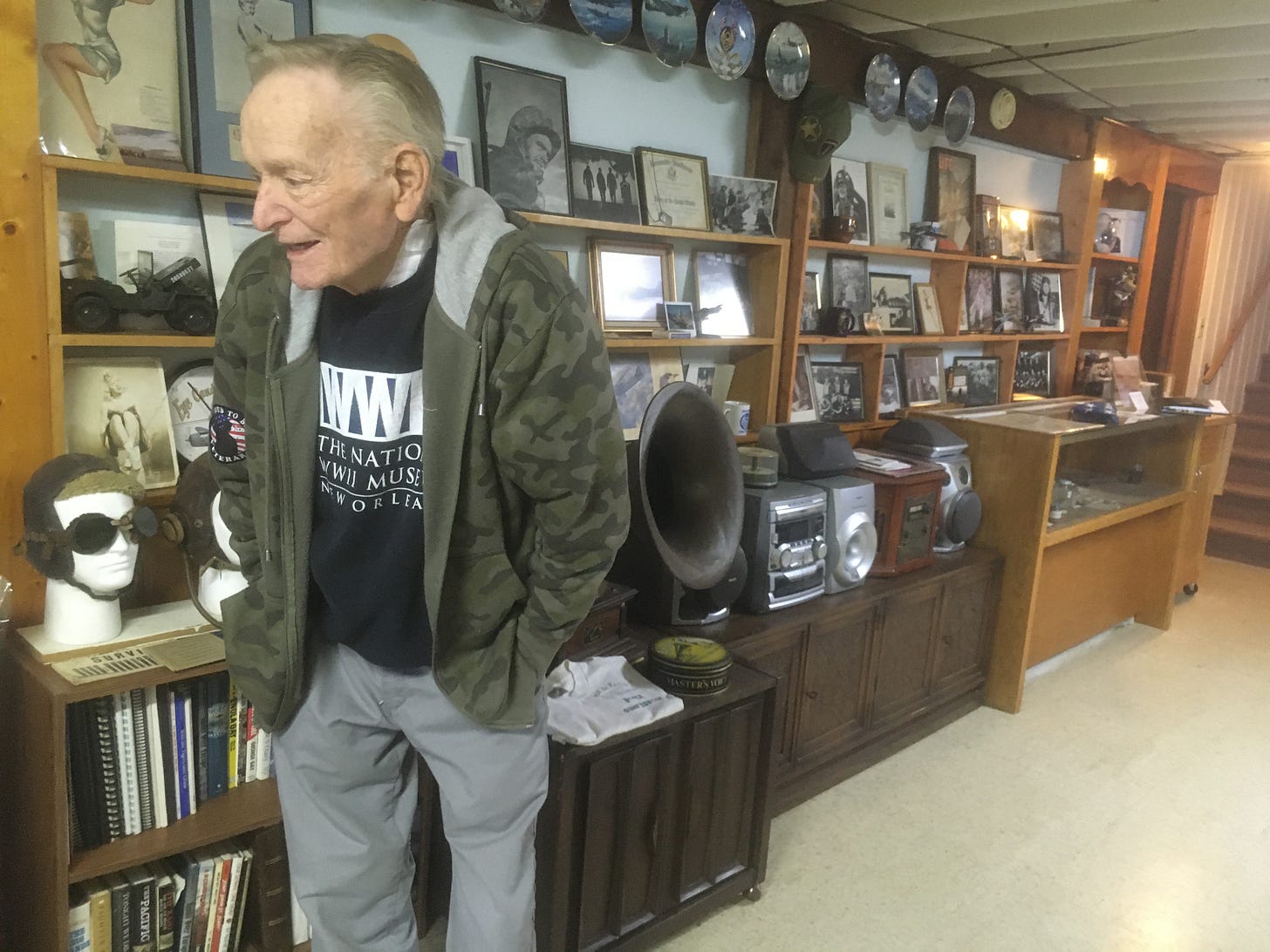
IOWA FALLS — Chuck Taylor was four years old on Dec. 7, 1941. So he quite literally grew up with World War II.
And a vast collection of World War II items has grown up around him.
His holdings include a Nazi swastika from the tail of a German fighter plane, a Japanese battle flag, a working World War II era Army Jeep and a sea of other items. He even has an Italian fascist insignia taken from an aircraft of that nation when Benito Mussolini was in power.
In fact, that defining conflict helped shape his later life. He served as an Army noncommissioned officer in the Pentagon in the late ‘50s and early ‘60, preparing confidential communications during incidents such as the Lebanon crisis of 1958, when the U.S. dispatched troops and ships to protect the pro-Western government there.
He continued in government service. He served as a police officer for the city of Ames while attending Iowa State University part time in the late 1960s, and a prison guard at the Iowa Men’s Reformatory in Anamosa when he attended the University of Iowa full time. Through contacts there, he then did background investigations for security clearances as a civilian with the Naval Investigative Service, predecessor to the Naval Criminal Investigative Service or NCIS.
He eventually worked his law enforcement connections into a long and well-traveled career as an inspector with the U.S. Postal Inspection Service. After retirement, he eventually returned to Iowa Falls, where his family settled most of his childhood.
Over the years, in his various travels, he not only acquired a veritable museum of World War II artifacts, he reached out to World War II veterans.
He also has one published work on biographies of veterans of the U.S. Eighth Air Force. It was based in England and responsible for a major portion of the bombing raids over Nazi Germany prior to and after the D-Day invasion. Many of the veterans he talked to for that book have since passed away.

Some of the World War II artifacts are in his home. Others have been moved to the Carnegie-Ellsworth building in downtown Iowa Falls. It once housed the public library and is home to the local historical society
Now, the city of Iowa Falls has made available a building downtown to amass his collection into a museum. It’s anticipated to be open to the public sometime in September.
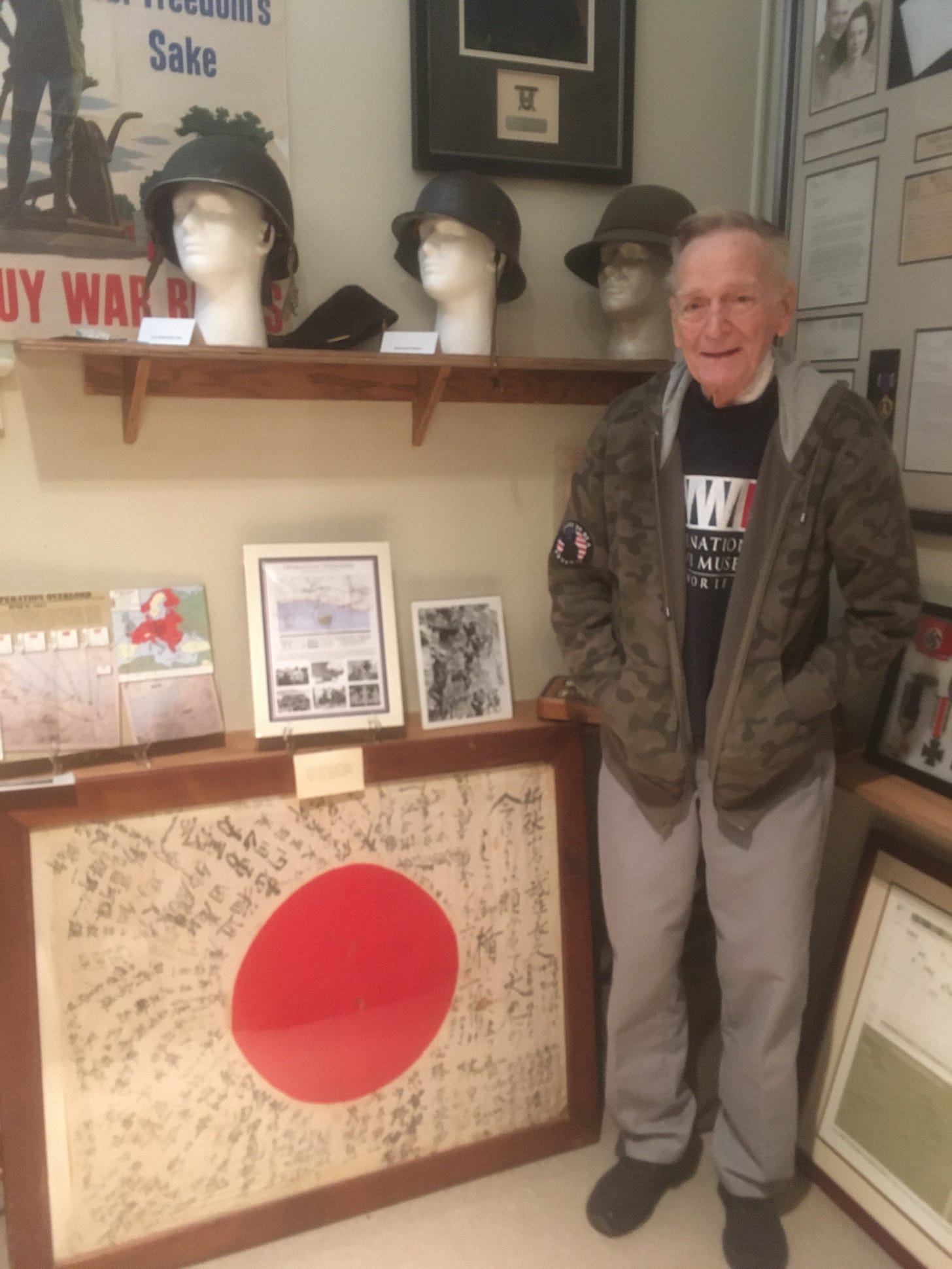
“I was four years old on Pearl Harbor Day,” Taylor said. “I was riding a tricycle around the basement in a house where we lived in Washington, Iowa. My dad was a plumber. When the war broke out we moved to New London. He worked at the munitions plant in West Burlington. After the war we wound up here.”
After high school and junior college. “I went into the Army because I didn’t have any money. It was the best thing I ever did.” He was working at post headquarters in Fort Lee, Va. when he was awakened, ordered to gather his gear and was conveyed by limousine to Fort Myer and the Pentagon. Ten soldiers in all were summoned.
He worked at a top secret message center. In addition to Lebanon there were tensions with Communist China over Formosa, now called Taiwan, and the French had just been driven out of what is now Vietnam.
”I could type 100 words a minute,” he said. “It was top secret stuff. We were putting out stuff like crazy.” Much of it he can’t and won’t talk about even today, because it still has contemporary relevance.
”I had a big office there” and staff pretty much wallpapered the walls with maps of the entire Middle East during the Lebanon crisis. Though he was an enlisted man, “those officers treated me just like I was one of them. I loved it. It was amazing.”
He walked to work and in 1959 encountered a funeral procession for Secretary of State John Foster Dulles. He recognized one car in the procession headed his way and snapped to attention. Gen. Maxwell Taylor, chairman of the Joint Chiefs of Staff, smiled and returned his salute.
“About a year ago I found out his (Gen. Taylor’s) grandfather and my dad’s grandfather were brothers,” he said, making he and the general third cousins. Gen. Taylor also commanded the U.S. Army 101st Airborne Division, nicknamed “The Screaming Eagles” for their unit patch, during World War II.
Taylor’s amassed his collection of items practically since he got out of the Army about 60 years ago. A widowed aunt remarried a man who was a Pacific war veteran, based in the Philippines and gave him some items, including Filipino knives and some “I Shall Return” souvenir cigarettes, so named after Gen. Douglas MacArthur’s vow to return to the islands after they had fallen to the Japanese. He kept accumulating items.
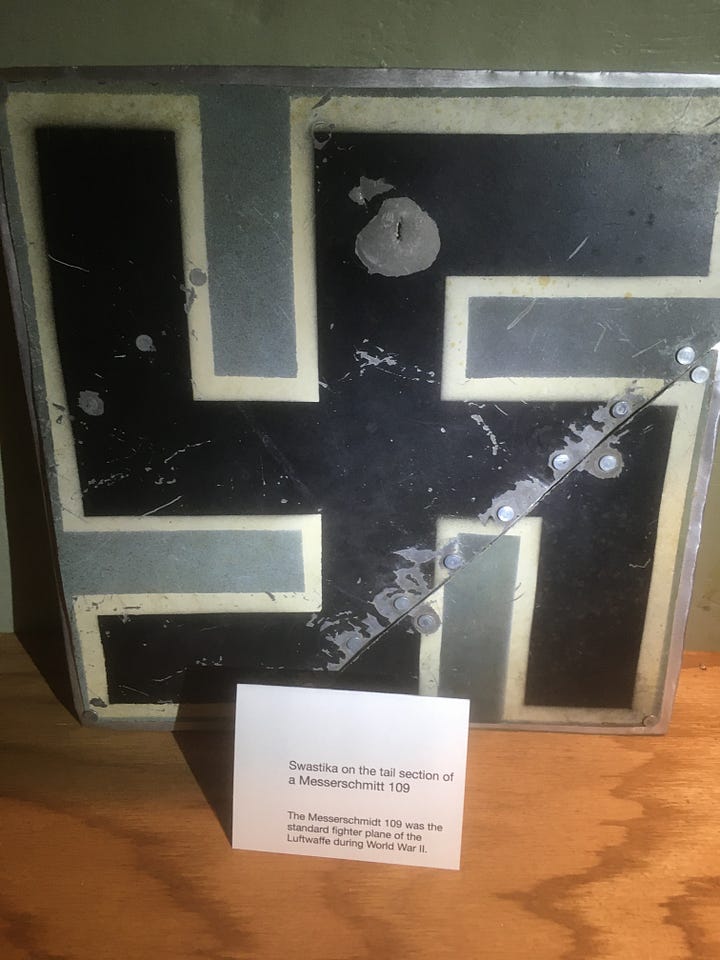
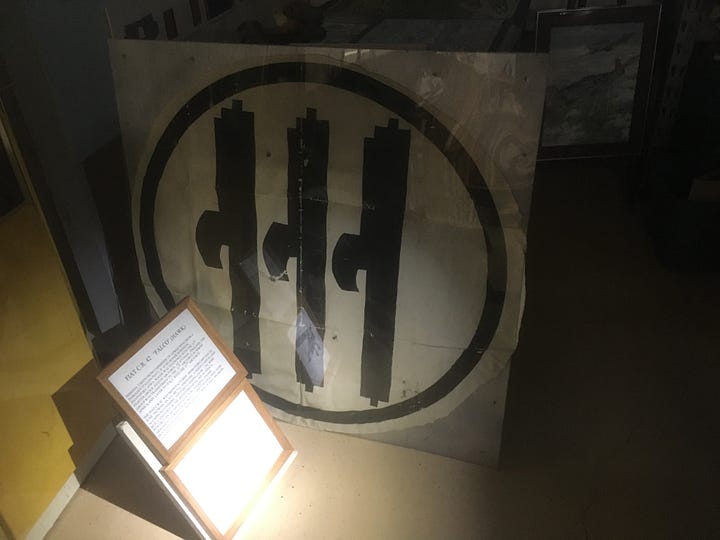
He developed an interest in the U.S. Eighth Air Force in the early 2000s and became president of the U.S. Eighth Air Force Historical Society, which was the impetus for his book. It included “Air Force buffs, war buffs, and a lot of veterans.’ Several were in the Waterloo-Cedar Falls area, and he spent a lot of time at the Five Sullivan Brothers Iowa Veterans Museum in Waterloo interviewing them for his book.
“My son and I went to a lot of air shows,” he said. What was to be a one-year term as president ended up being 20. He set up their reunions, and “they kept electing me president every year,” he said.
He also helped organized a fundraiser to a memorial to Joe Gomer of Iowa Falls, who was a Tuskegee Airman, at Ellsworth Community College. “Joe and I were good friends,” he said.
Some items Taylor has accumulated were purchased from veterans, “but a lot were given to me by people. They’re still bringing it,” he said. “Amazing.”
Much of it is anticipated to be on display for the public to see in September at 313 Stevens Street in Iowa Falls, dubbed the Heartland Military Museum. It’s about a block and a half from the Carnegie-Ellsworth Building and is being developed by the historical society. For more information, including how to donate financially to support the effort, click here,
Pat Kinney is a freelance writer and former longtime news staffer with the Waterloo-Cedar Falls Courier and, prior to that, several years at the Ames Tribune. He is currently an oral historian with the Grout Museum District in Waterloo. His “View from the Cedar Valley” column is part of “Iowa Writers Collaborative,” a collection of news and opinion writers from around the state who previously and currently work with a host of Iowa newspapers, news organizations and other publications. Click on their links below to sample their work.
The Iowa Writers’ Collaborative




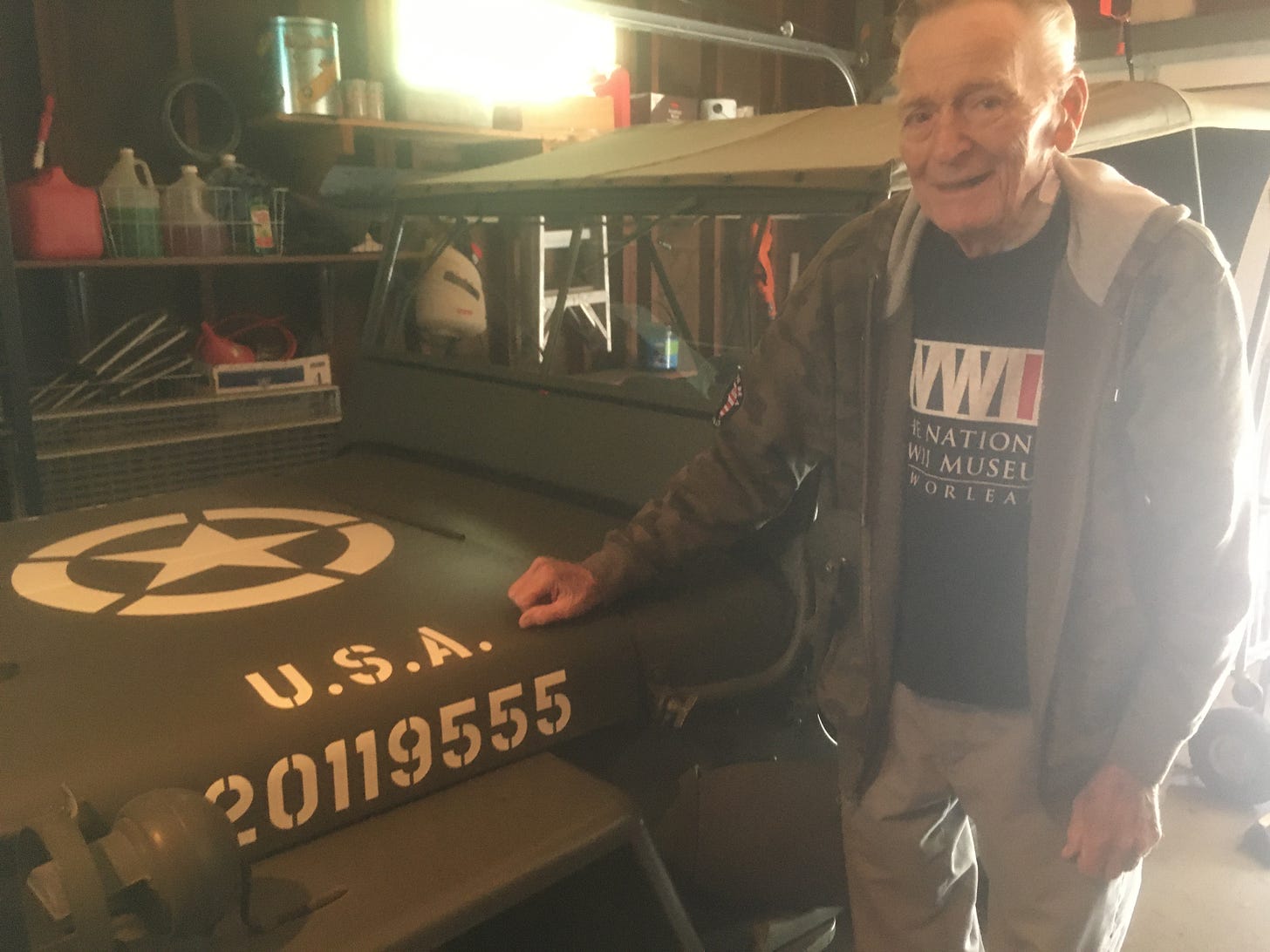
This is so interesting. I look forward to eventually seeing this collection.